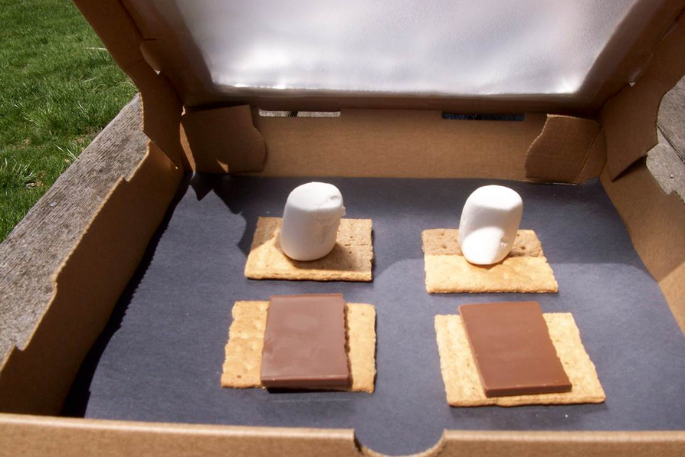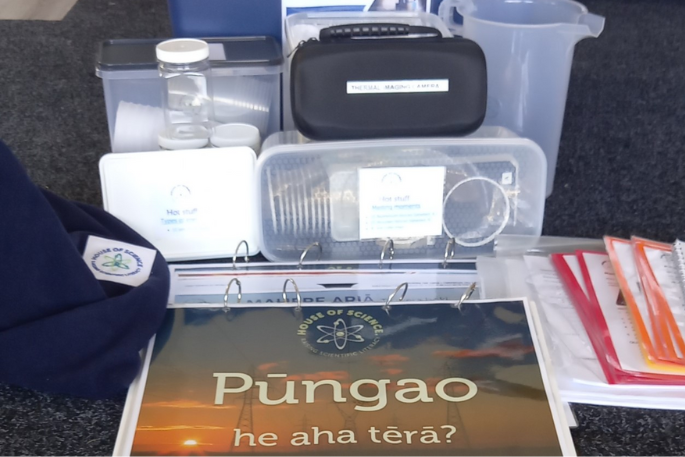 |
Science talk With Chris Duggan House of Science |
As we enjoy the early Autumn sunny days, why not have some creative fun and a go at building your own solar-powered oven and cooking some delicious S'mores.
NB – This activity includes a craft knife, so please ask an adult for help.
Equipment:
- A Pizza Box
- Ruler
- Pen
- Craft knife
- PVA glue/glue stick
- Aluminium Foil
- Black Paper/card
- Clear Sandwich wrap
- Sellotape
- Plain biscuits
- Marshmallows
- Chocolate (thin pieces are better)

Instructions:
1) Using your pen and ruler mark a square on the lid of the box about 5cm from the edge.
2) With adult supervision, using your craft knife cut along 3 sides of the square.
3) Score the 4th side of the square with the back of your pen and bend the cardboard along the line, making a flap and ‘window' in the top of your box.
4) Measure and cut a piece of aluminium foil the same size as your box flap.
5) Now cover the inside of the flap with glue and stick the sheet of foil onto the surface of the flap. Ensure the shiny side is facing out and that it is nice and flat, so the foil is as reflective as possible.
6) Cover the internal surfaces of your pizza box with foil as well.
7) Make a big square of black paper and glue it to the base inside your box - the black paper should cover the whole base of the box.
8) To trap the heat inside the oven you will need to glad wrap your window that was created when you made the flap. Tape a layer of glad wrap over this opening. If your glad wrap is too flimsy, you can add a second later but make sure it does not wrinkle too much.
9) Position your newly built solar oven in a sunny spot in the garden and face the opening directly towards the sun.
10) Place a biscuit onto the black paper in your oven. Put a marshmallow on the biscuit, and then add a piece of chocolate on top. Carefully shut the lid and prop open the flap using the ruler or a stick.
11) Depending on how hot the day is your S'mores will take 30-60 minutes to fully melt. The experiment was tested on a 28-degree Celsius day, and it took 30 minutes for the marshmallow to fully melt.
The Science Behind:
Sunlight enters the oven through the window. Extra light is reflected off the foil on the lid and redirected into the oven as well. Inside the oven, the black surface is very good at turning light into heat. Then the black paper radiates this heat, warming the air inside the oven. Normally, this hot air would rise and float away, but it's trapped by clear plastic, so it keeps getting hotter and hotter!
This oven is slow to heat, and it doesn't get nearly as hot as an electric or gas stove. But it is completely renewable, powered only by the Sun and not by fossil fuels.
Further Activity:
You might like to experiment to make your solar oven more efficient. You could try insulating the box with scrunched-up newspaper or blocking up any gaps in the box to stop heat from escaping. You could add a second layer of clear plastic to the window leaving an air gap between the layers to act as double glazing. You could add extra mirrors to shine even more light into the oven too.

If you are a teacher, then you could also book the House of Science NZ science resource kit ‘Hot Stuff/Te Wera Hoki' which focuses on heat energy. For more information about the House of Science, head to www.houseofscience.nz

